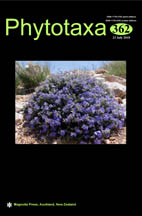Abstract
A new species of Neolinocarpon, N. phayaoense was found on a branch of Hevea brasiliensis in northern Thailand. The new species is introduced in this paper, with evidence from morphology and phylogenetic analyses. Descriptions, illustrations and notes are provided for the new taxon. Maximum-likelihood and Bayesian inference analyses of a combined LSU and ITS sequence data clarified the phylogenetic affinity in Neolinocarpon, with the species separated from Linocarpon in Linocarpaceae. Neolinocarpon is morphologically distinct from Linocarpon in having immersed ascomata.

